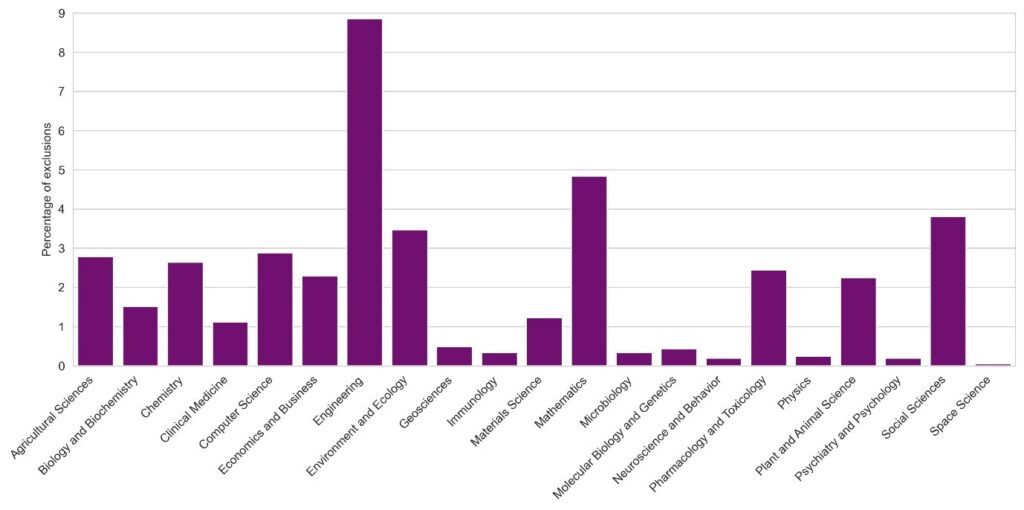
Recent years have seen a transformative shift in the realm of academic publishing—not due to novel discoveries, but rather a comprehensive enforcement against journals failing to uphold integrity standards. Clarivate, the analytics company responsible for Web of Science, has spearheaded this initiative by removing over 100 journals in the last three years. Among the most notable losses is the Taylor & Francis journal Bioengineered, which attracted attention for being compromised by a prolific “paper mill.”
This article delves into Clarivate’s enhanced quality control protocols, the motivations fueling the crackdown, and the necessary evolution of the academic publishing framework to safeguard scientific integrity.
Why Is Clarivate Intensifying Its Efforts?
Removing a journal from Web of Science, a highly regarded database of scholarly works, is a significant action. This delisting revokes the journal’s indexing status, voids citation statistics, and, importantly, erases its impact factor—a key indicator of scholarly significance. The delisting of so many journals from this platform signifies a notable escalation in scrutiny, prompted by escalating instances of scientific misconduct.
“We observed a growing sophistication in attempts to manipulate the system,” remarked Nandita Quaderi, Senior Vice President at Clarivate and Editor-in-Chief of Web of Science, in an interview with Chemistry World. The difficulty extended beyond identifying overtly flawed content, such as yoga studies published in chemistry journals, to uncovering more subtle misconduct like suspicious citation patterns that inflate journal and article metrics.
How the New Assessment System Operates
Clarivate’s revamped vetting approach consists of a multi-step, data-oriented process driven by AI. Every journal in the Web of Science is subjected to an initial screening for characteristics such as variations in size and geographical distribution of authors. Any anomalies trigger a more in-depth evaluation using tools that verify whether articles conform to a journal’s declared scope and whether citations are relevant.
Importantly, Clarivate does not depend on AI for final verdicts. Rather, the AI is used to flag potential issues, guiding editors toward concerns that necessitate human assessment. This hybrid system strikes a balance between efficiency and editorial judgment, enabling Clarivate to tackle the formidable task of overseeing more than 22,000 academic journals.
The Surge of Paper Mills and Honeypot Journals
A significant catalyst for delistings is the rise of “paper mills”—services that generate scientific articles in bulk for a fee, often filled with questionable or fabricated information. The Bioengineered journal has retracted over 80 articles connected to paper milling, with many more under suspicion.
Special issues of journals are particularly at risk. These editions may be overseen by guest editors outside the primary editorial team and can circumvent standard review processes. As Quaderi emphasized, when material is not reviewed by the editor-in-chief or the usual staff, it enables fraudulent submissions to evade detection.
An Evolving Battleground
As advancements in technology continue, so too do the strategies of wrongdoers. Clarivate’s editorial teams are discovering that identifying fraudulent submissions has become increasingly challenging due to their heightened technical sophistication. The prevalence of fake conference proceedings is also growing, spurred by the pandemic-induced rise in virtual and hybrid conferences, which allow for easier infiltration of low-quality content.
Engaged in a Tech Arms Race
The ongoing struggle between fraud and detection is evolving into a competitive arms race. While machine learning and algorithm-based tools are assisting in the identification of misinformation, they are also providing fraudsters with tools to better conceal their activities through convincing yet fake scientific outputs. Clarivate relies not solely on technology, but also on the vigilance of whistleblowers, librarians, researchers, and academic watchdogs to keep pace with emerging tactics.
What Occurs When a Journal Is Delisted?
Prior to a journal being officially delisted, Clarivate places it “on hold,” suspending new content inclusion while it conducts a six-week inquiry. Publisher responses vary significantly—some cooperate, while others reject allegations. If warranted, the journal faces a minimum two-year suspension before it can apply for re-inclusion in the Web of Science.
Nevertheless, Clarivate provides a 12-month remediation period for transparent and proactive publishers. During this time, publishers can perform their own thorough investigations and implement corrective measures. This shift in policy encourages accountability and a collaborative approach.
The Underlying Crisis in Academic Publishing
At the heart of these unethical practices lies a flawed incentive structure that emphasizes publication quantity and citation metrics over quality. The “publish or perish” mentality drives authors, institutions, and publishers to manipulate the system, often without awareness.
Metrics like impact factor and citation counts have evolved into surrogate currencies in academia. Universities gain from enhanced rankings, researchers secure funding and career advancements, and publishers see increased revenue, particularly under article processing charge (APC) frameworks commonly adopted by open access journals. This intensifies pressure on journals to boost publication volume, often at the expense of integrity.
Clarivate’s Vision: Restoring Trust
In a pivotal policy shift in 2023, Clarivate made all indexed journals in